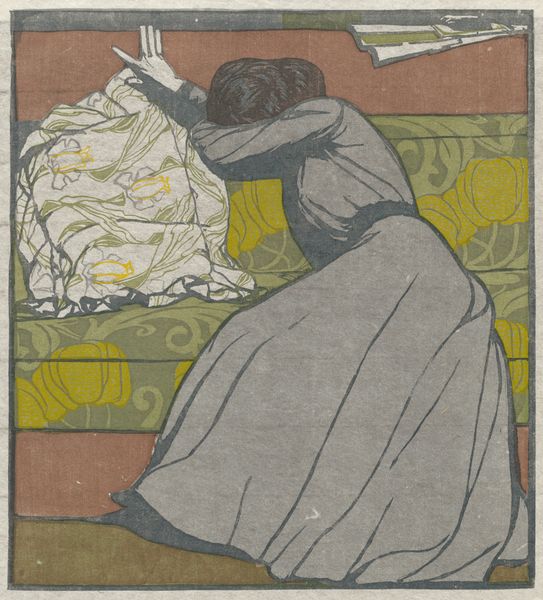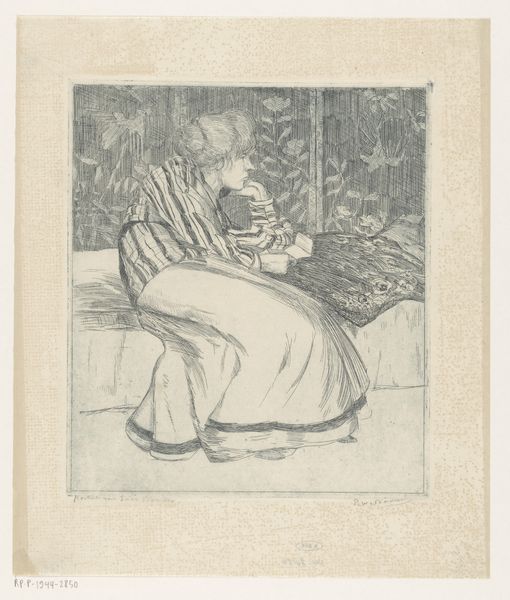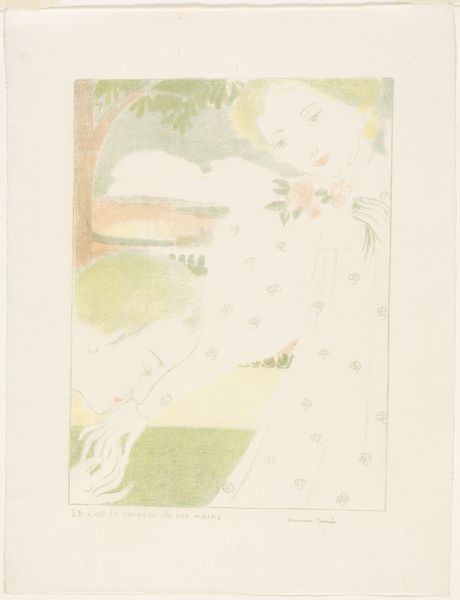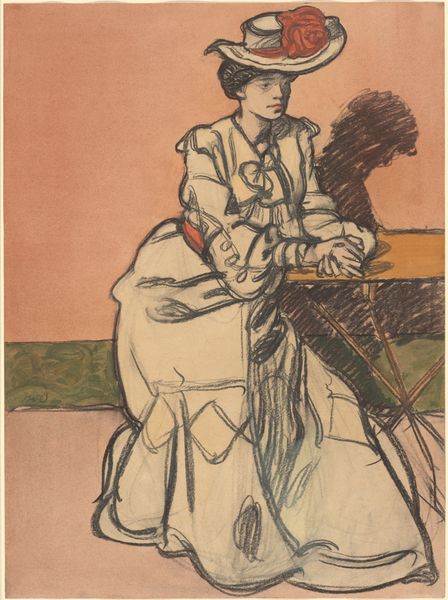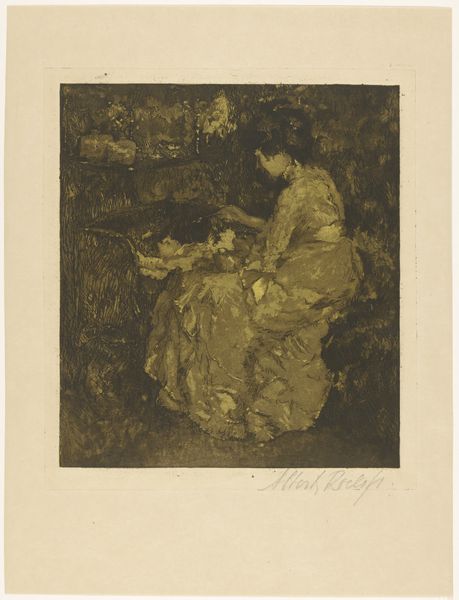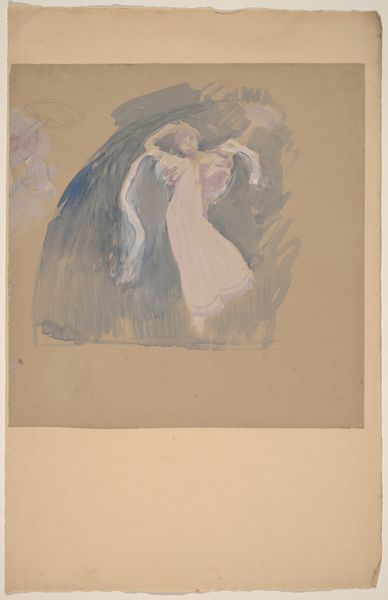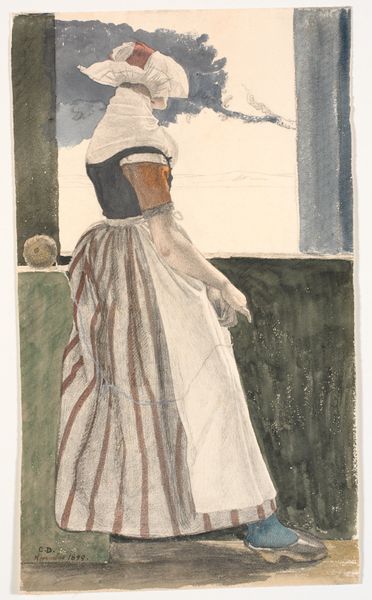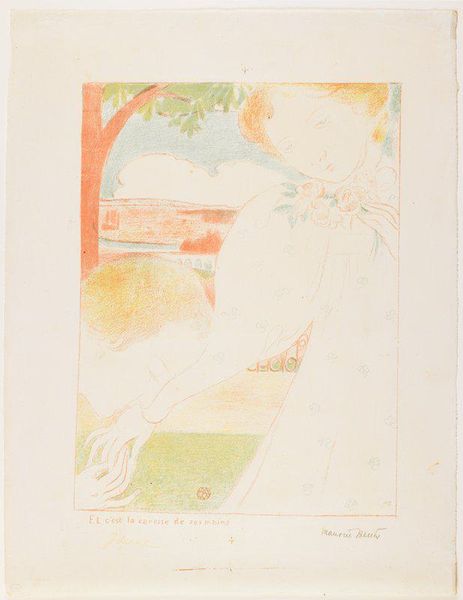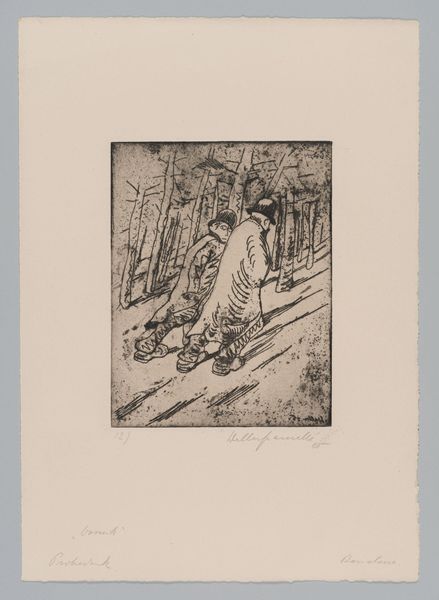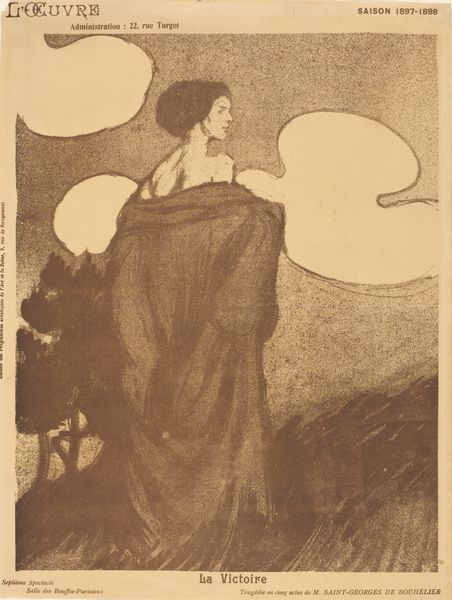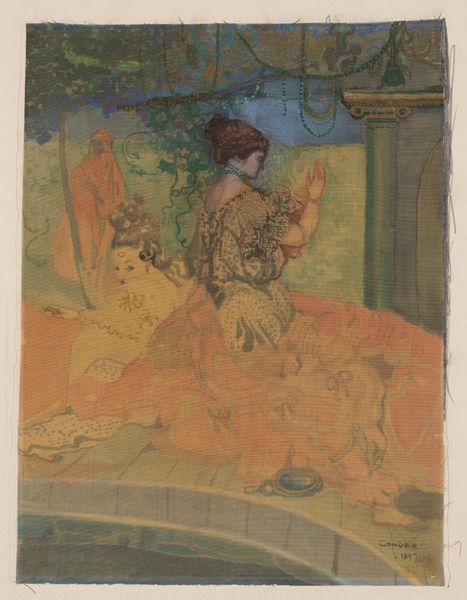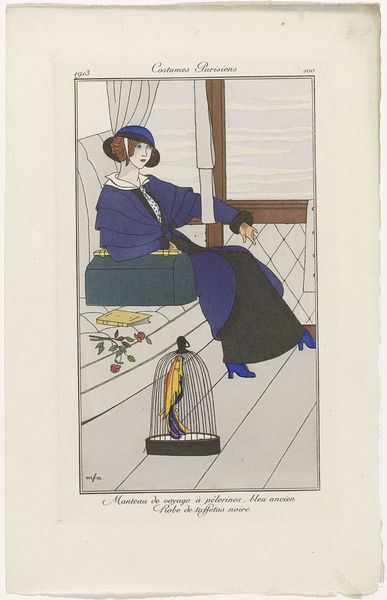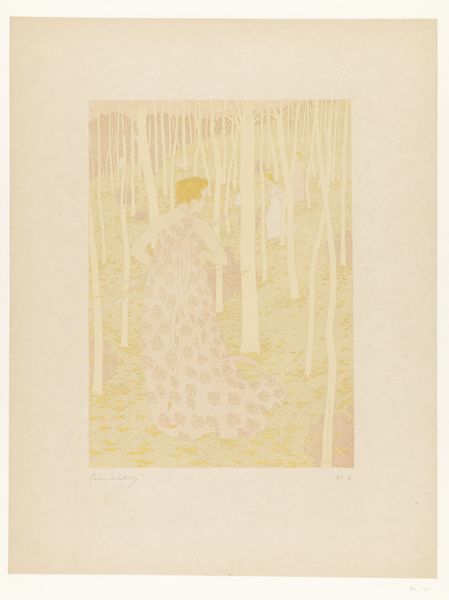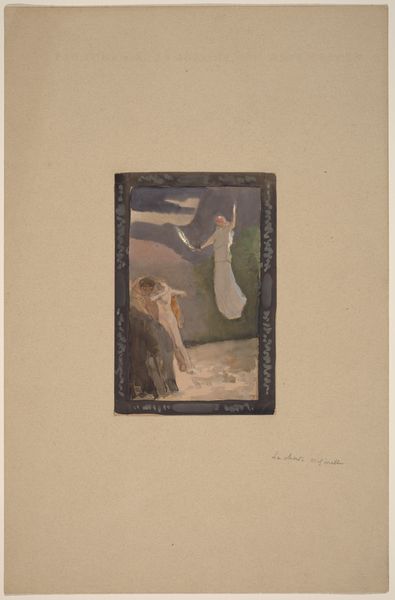
drawing, graphic-art, print, paper, woodcut
#
drawing
#
graphic-art
#
art-nouveau
# print
#
figuration
#
paper
#
woodcut
#
symbolism
Dimensions: 285 × 259 mm (image); 381 × 308 mm (sheet - folded); 560 × 450 mm (secondary support)
Copyright: Public Domain
Curator: The image before us is Maximilian Kurzweil's 1903 woodcut, titled "The Pillow," a piece residing here at the Art Institute of Chicago. Editor: Oh, the feels! Immediately, this print whispers melancholy. A woman, almost dissolving into her surroundings, overcome by… something. Is it exhaustion or despair? Curator: Indeed, that sense of pervasive weariness is key. Note how Kurzweil employs flattened perspectives and decorative patterns, hallmarks of both Art Nouveau and Symbolist aesthetics. The composition guides our eye, directing us to decode the thematic relationship between the figure and her setting. Editor: That's a very diplomatic read. I find myself less drawn to its stylish classification and more to the way it conjures such profound solitude. I can almost feel the weight of her sorrow in the drooping lines of her figure and the cold hues chosen for her robe. Curator: Consider, however, that the curvilinear lines in the floral motifs of the couch offer a compositional counterpoint to her posture. The wallpaper seems to vibrate, setting off her utter stillness. This juxtaposition emphasizes the tension between inner turmoil and outer appearance. Editor: Very true! The way the scene flattens everything focuses your mind directly onto her emotions. It’s quite powerful in its understatedness. Curator: Woodcut, as a medium, also plays a significant role in expressing the overall mood, yes? The graphic quality, sharp lines, the almost brutal simplicity it affords, emphasizes the harsh reality of emotion in Kurzweil's overall visual statement. Editor: Exactly! And with everything muted – the colour, her pose – what remains is a whisper of humanity. And a really good use of negative space; makes her isolation more pronounced. It is beautiful but somber. Curator: It speaks volumes on a technical level, too, regarding graphic art during the period, yes? Its historical and cultural weight anchors any emotive reading we might assign to the subject depicted. Editor: Well, you put it all so cleverly in perspective. Curator: I appreciate your interpretation too. It has been revealing.
Comments
No comments
Be the first to comment and join the conversation on the ultimate creative platform.
